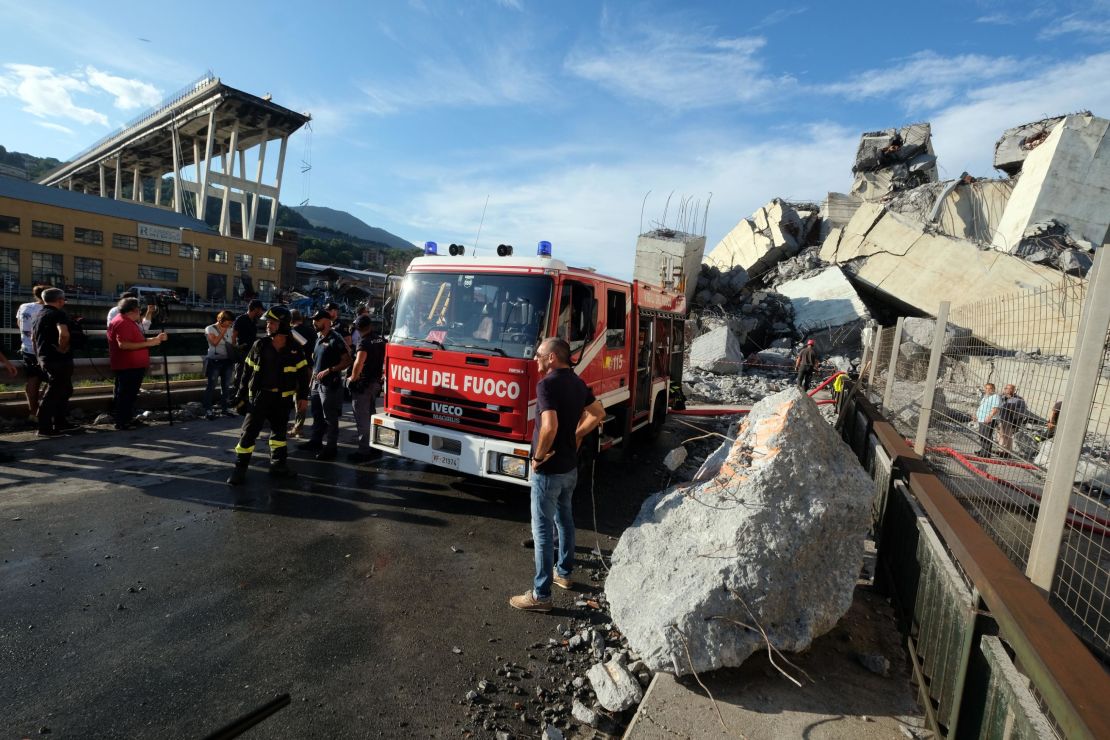Editor’s Note: Silvia Marchetti is a Rome-based freelance reporter and writer. She covers finance, economics, travel and culture for a wide range of media, including MNI News, CNN Travel, News.com.au and Spear’s magazine. The opinions in this article belong to the author.
For years, many had been concerned that the Morandi Bridge – Genoa’s Brooklyn Bridge, as some call it – was going to fall sooner or later. Citizens, architects and engineers had all talked publicly, as had – perhaps, secretly – one or two local politicians.
For many, it was just a matter of time.
But when it collapsed under a torrent of rain, killing dozens of people, the usual political inferno flared up, with parties accusing one another as the government blamed it all on the highway service provider, in search for a scapegoat.

The sad truth is that the tragedy could have been avoided. The rain likely had nothing to do with it. The disaster was due to “a human error” according to the Genoa Public Prosecutors Office. An investigation has since been opened for potential manslaughter.
The bridge, like most roads and highways in Italy, was badly in need of a makeover – and not because it was built decades ago. There are bridges dating back to Ancient Rome that still stand.
Genoa’s Morandi Bridge, on the other hand, was nearing its end, in constant need of repairs that unfortunately extended only as far as minor adjustments – a bit like fixing parts of a dying car instead of buying a new car.
It was never given a full makeover, despite the fact it was known to be in urgent need of attention. Plans for an alternative motorway were never given due attention, while more appropriate technical know-how could have prevented the deterioration of the bridge.
We now know that the materials used to build it were outdated and unfit to meet rising vehicle circulation needs.
Traffic, especially in the north, has significantly increased since the bridge was built back in the 1960s. Over the years, it had turned into one of the main highway intersections in Italy, connecting various regions to France.
Modern infrastructure is crucial to any country’s development and safety, yet it appears not to be a top priority in Italy.
After the tragedy, Matteo Salvini, Italy’s deputy prime minister and long-term EU critic, tweeted: “If there are European constraints that prevent us from spending money to secure the schools where our children go or the motorways where our workers are traveling on, we will put the safety of Italians before everyone and everything.”
But the truth is that the public funds earmarked to modernize roads or build new ones are allocated, but often never actually spent. The money is there, but we don’t know what to do with it.
Italy lags below the European average for not fully investing EU cohesion funds aimed at supporting infrastructure projects.
Investment in infrastructure can be hard to accomplish. It can take years – even decades – to get anything built, and not because of Europe’s austere fiscal rules that limit spending. That’s just a poor excuse.
Politics has its fair share of blame, and shame.
A newly elected government is able to “undo” key infrastructure plans approved by a previous cabinet simply due to a “change of priorities” or pressures from different lobbies. Road maps change each time a new party – or parties – rises to power.
Excessive red tape is another obstacle to infrastructure projects being fully implemented in Italy.
Then there is the mafia. Corruption of public officers and infiltration of criminal groups into public tenders slows down upgrading Italy’s creaking public infrastructure.
The highway that runs all the way down to Italy’s southern tip – dubbed the Gangsters’ Road – took almost 50 years to be upgraded and completed due to ongoing probes. I remember once having to zig-zag my car between men-at-work roadsigns while driving down to Sicily. It took ages.
Genoa’s probe will take time to ascertain who’s to blame. But in the meantime?
Perhaps, Italian authorities could start mapping all critical areas and define a serious longer-term infrastructure plan that isn’t trashed after a few years by a new government.
As we’ve discovered this week, delaying upgrading infrastructure isn’t just inconvenient, but can be deadly.



